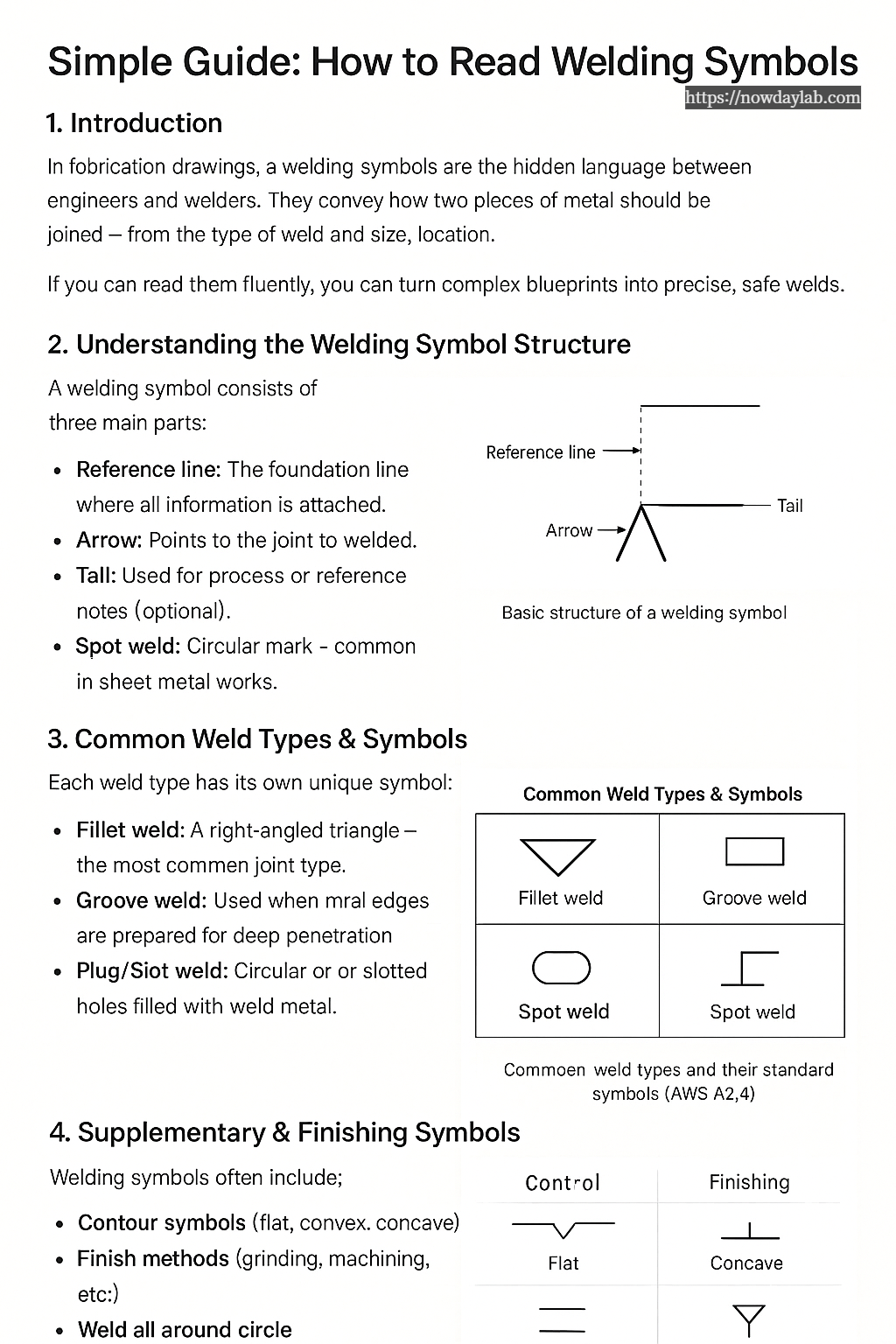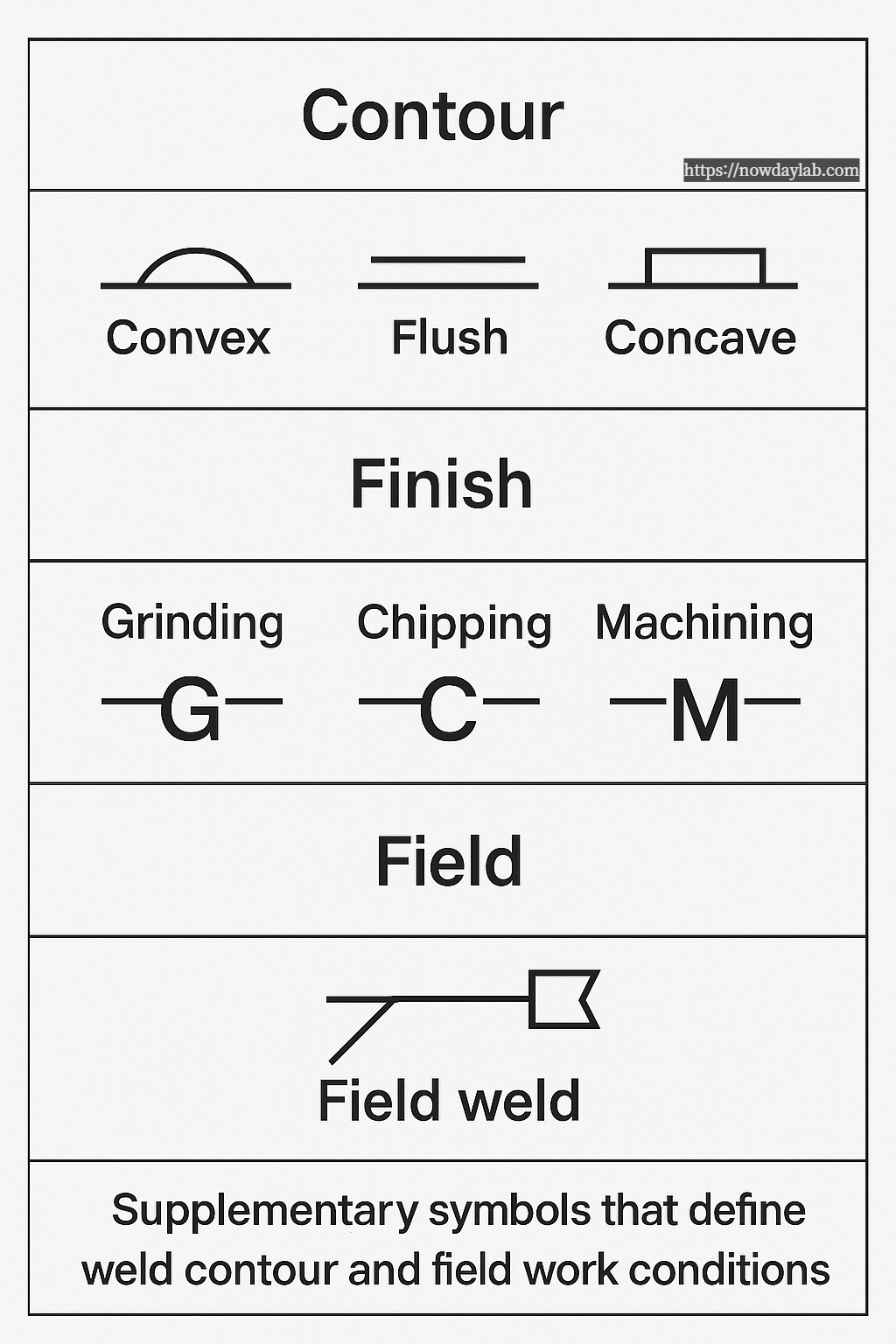
1. Introduction
In fabrication drawings, welding symbols are the hidden language between engineers and welders.
They convey how two pieces of metal should be joined — from the type of weld and size,
to the location, finish, and process.
If you can read them fluently, you can turn complex blueprints into precise, safe welds.
2. Understanding the Welding Symbol Structure
A welding symbol consists of three main parts:
- Reference line: The foundation line where all information is attached.
- Arrow: Points to the joint to be welded.
- Tail: Used for process or reference notes (optional).

3. Common Weld Types & Symbols
Each weld type has its own unique symbol:
- Fillet weld: A right-angled triangle – the most common joint type.
- Groove weld: Used when metal edges are prepared for deep penetration.
- Plug/Slot weld: Circular or slotted holes filled with weld metal.
- Spot weld: Circular mark – common in sheet metal works.
Image suggestion:
File name: common-weld-symbols-chart.jpg

4. Arrow Side vs Other Side
The arrow side indicates where the weld is applied relative to the reference line.
If the symbol appears below the line, weld the arrow side.
If it appears above, weld the opposite side.
This distinction is crucial in multi-pass or double-sided joints.
5. Supplementary & Finishing Symbols
Welding symbols often include:
- Contour symbols (flat, convex, concave)
- Finish methods (grinding, machining, etc.)
- Weld all around circle
- Field weld flag
Image suggestion:
File name: weld-finish-symbols-chart.jpg

6. Reading Example
Let’s interpret an example:
A fillet weld symbol below the reference line with “6” on the left and “100” on the right
means a 6 mm fillet weld, 100 mm long, on the arrow side.
Once you understand this pattern, complex blueprints become readable at a glance.
7. Summary
Learning welding symbols isn’t just about memorizing icons — it’s about visualizing how a joint will look once welded.
For engineers, it ensures clear communication; for welders, it ensures precision and safety.
Pressure Relief Devices – Safety Valve vs Rupture Disc Explained
1. IntroductionAsk anyone who’s ever signed off a pressure vessel — you can design it perfect, weld it perfect, hydrotest it perfect.But if you mess up the relief setup? That’s a bomb sitting quietly in the corner.Pressure relief devices aren’t som
www.nowdaylab.com
What Is a Pressure Vessel? Field Notes on Design, Types, and Safety Codes
IntroductionAsk anyone who’s spent a few years around plants —a pressure vessel isn’t just a big metal tank.It’s the heart of any process line. When one goes wrong, you’re not just stopping production; you’re flirting with disaster.These vessel
www.nowdaylab.com
Flange Standards & Dimension Chart – ASME / JIS / DIN Comparison
1. ANSI / ASME B16.5 – Class 150 (RF Type)(Reference: ASME B16.5-2020)2. JIS B2220 – 10K Flange Dimensions(Reference: JIS B2220-2019)3. DIN EN 1092-1 – PN16 Flange Dimensions(Reference: DIN EN 1092-1:2018)7. Size Conversion (ASME / JIS / DIN) ASME (i
www.nowdaylab.com